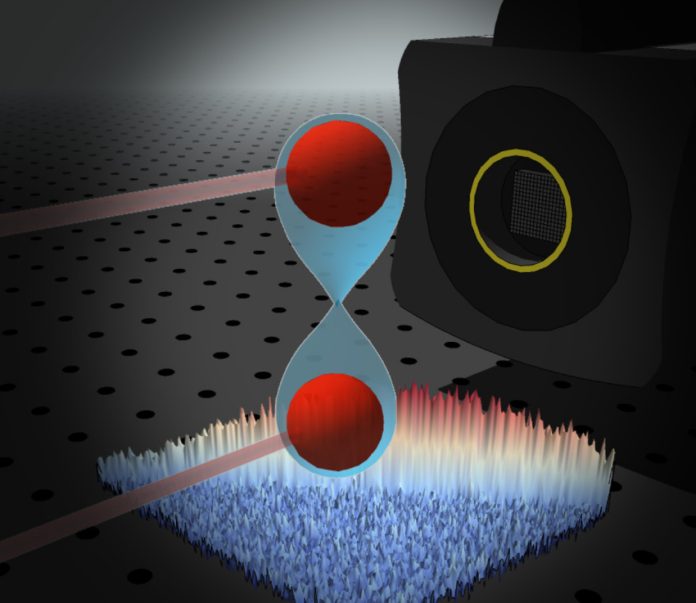Quantum entanglement is a physical phenomenon that occurs when pairs or groups of particles generate or interact in ways such that the quantum state of each particle cannot be described independently of the others. This is true even when the particles are separated by a large distance. A quantum state must instead be described for the system as a whole.
Measurements of physical properties such as position, momentum, spin, and polarization, performed on entangled particles establish appropriate correlation among them. For example, let’s assume a pair of particles generate in such a way that their total spin is zero. Further, let’s say one particle has a clockwise spin on a certain axis. Then, due to entanglement, the spin of the other particle, measured on the same axis, is counterclockwise.
This behavior, however, gives rise to paradoxical effects. Any measurement of a property of a particle can be seen as acting on that particle (e.g., by collapsing a number of superposed states). The measurement changes the original quantum property by some unknown amount. In the case of entangled particles, such a measurement is on the entangled system as a whole. Therefore, it appears that one particle of an entangled pair “knows” what measurement has been performed on the other, and with what outcome. This is true even though there are no known means of communicating such information between the particles. And, even when the particles are at an arbitrarily enormous distance away from each other at the time of measurement.
Entanglement measures quantify, the amount of entanglement in aquantum state (often viewed as a bipartite). Entanglement entropy is the standard measure of entanglement for pure states (but not a measure of entanglement for mixed states). For mixed states, there are some entanglement measures in the literature and no single one is standard.
- Entanglement cost
- Distillable entanglement
- Entanglement of formation
- Relative entropy of entanglement
- Squashed entanglement
- Logarithmic negativity
Most (not all) of these entanglement measures reduce for pure states to entanglement entropy and are difficult (NP-hard) to compute.
Applications of Entanglement
Entanglement finds many applications in quantum information theory. Entanglement makes otherwise impossible tasks achievable.
Some of the most widely known entanglement applications include superdense coding and quantum teleportation.
Most researchers believe that entanglement is necessary to realize quantum computing (although others dispute this).
Some protocols of quantum cryptography use entanglement. The reason is the “shared noise” of entanglement is an excellent one-time pad. Further, because measurement of any one of the particles of the entangled pair results in immediate breakdown of the entanglement, cryptography based on entanglement of quantum particles can help instantly detect any mala fide interception to the transmission.
In interferometry, entanglement is necessary for surpassing the standard quantum limit and achieving the Heisenberg limit.
Read more on IoT Practitioner.


















